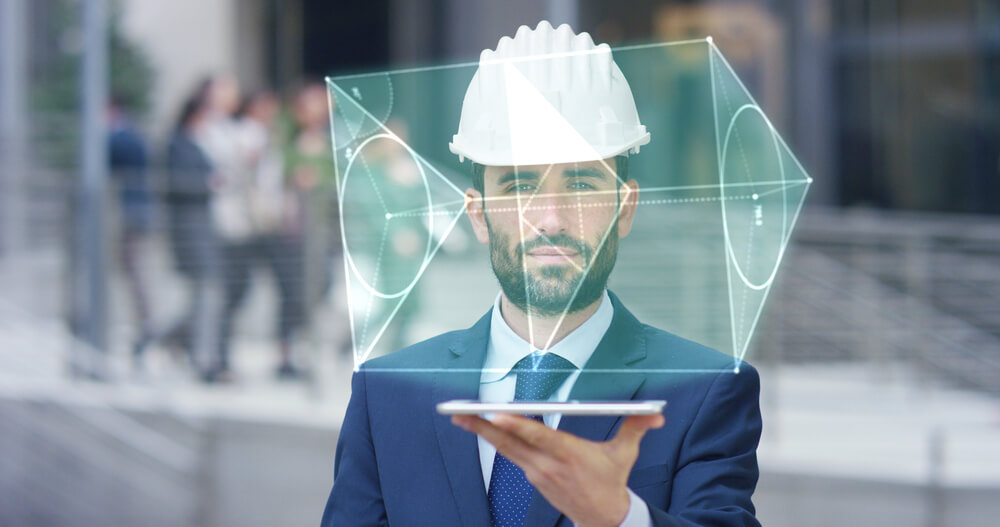At the heart of economic growth is commercial construction, which is moving increasingly in a digital direction. The materials used in construction, such as cement, steel, and chemicals, depend on supply chains throughout the world. By becoming more digital and interconnected with suppliers, construction firms are rapidly improving cost efficiency as well as going green. Here’s a look at how modern technology is raising the quality of commercial construction.
Construction Transformation Trends
One of the simplest explanations for the advancement of construction technologies is that project sites are now populated with smart devices, including smartphones and interactive apps. Data-collecting sensors in IoT devices are helping build a smarter knowledge base for contractors. The software can now facilitate every step of the construction process in some way. Project managers can communicate directly with site workers through cloud connections and mobile devices to collect real-time intelligence.
The placement of IoT sensors throughout a construction site is essential to developing a real-time digital ecosystem. Data is constantly collected and streamed to a central database, where analysts can monitor it in real-time. Automated AI software can help speed up site research for making adjustments.
Smartphones are ideal tools for collaboration among a construction crew. Complex projects raise many questions, so it’s important that workers have the ability to get answers from management quickly. Prior to smart technology, in which a database is fed data from diverse sources, questions could stack up over time, delaying responses that could move the project forward. Team members can enter data collection through shared software by adding notes and altering drawings, which they can access in real-time.
The trend toward cloud-based communication with the ability to tap into deep digital resources is happening with several other large-scale industries beyond construction, such as water and electric utilities. The goal is to use a wealth of data that measures system processes and figure out how to streamline operations with lower costs, less waste, and greater output at a faster pace. Some of the construction technologies that are helping cut costs include building information modeling (BIM), aluminum formwork, and prefabricated buildings.
Rise of Increasing Offsite Construction
Thanks to 3D printers, a certain amount of commercial construction can be done off-site. Projects with multiple units having the same floor plan are better managed using off-site construction, where conditions are more controlled. This assembly plant strategy is now commonly used to build apartments, hotels, hospitals, and schools. It helps reduce waste at the construction site, allowing the crew to be more productive.
Tunnel frameworks developed from 3D models are particularly innovative and more efficient than constructing a steel tunnel onsite. Labor costs and timelines for tunnel projects have improved dramatically for major contractors deploying this method. Steel formworks for tunnel frameworks can be used over and over, helping cut wasted materials.
Disruptive Technologies on the Horizon
Artificial intelligence (AI) is among the most advanced construction technology, as machine-learning software can tap into comprehensive data to get quick answers to project questions. AI plays a major role in boosting worker productivity by recommending ways to do tasks in the most efficient ways. Crew members equipped with mobile devices can spend less time moving around a site to get tools and materials.
Virtual reality (VR) is another disruptive technology that is changing the way construction is done. Wearing a VR headset allows a construction worker to experience tasks in a simulated digital environment, which is effective for training and preparing. It can help a project manager create a detailed safety plan to avoid equipment accidents. VR simulators have traditionally been used to train pilots, soldiers, and surgeons. They can now be used to train crane and forklift operators.
Augmented reality (AR) may also be used to improve workplace safety. It’s similar to VR, except AR takes place in the physical world while interfacing with the digital world. Robots that can perform physical tasks are a form of AR. The combination of VR and AR will be critical to developing human-like robots designed to help contractors speed up redundant tasks. Brick-laying robots are already part of advanced construction teams. Ultimately, AR and VR help analysts understand the physical world better.
Drones are another type of new technology that will transform construction companies of the future as early adopters already use them. Delivery drones can move tools and equipment in the air between suppliers and the site. Another advantage to drones is they can take aerial photographs of construction sites from various angles.
When it comes to site inspections, drones are like robots and can evaluate conditions by quickly scanning plenty of data. So drones are playing a significant role in improving the safety of construction sites, as they can pinpoint vulnerabilities and hazards before they cause damage. Drones can also monitor worker safety and performance throughout a workday. They are also used to keep crew members informed about insights from inspections.
The commercial construction industry keeps getting more efficient as it moves deeper into digital transformation. Technologies such as smartphones, IoT, AI, VR, and AR contribute to facilitating a safer and more productive workplace for builders. Contact us at Proforma Construction to learn more about how we can take your business technology to the next level.




